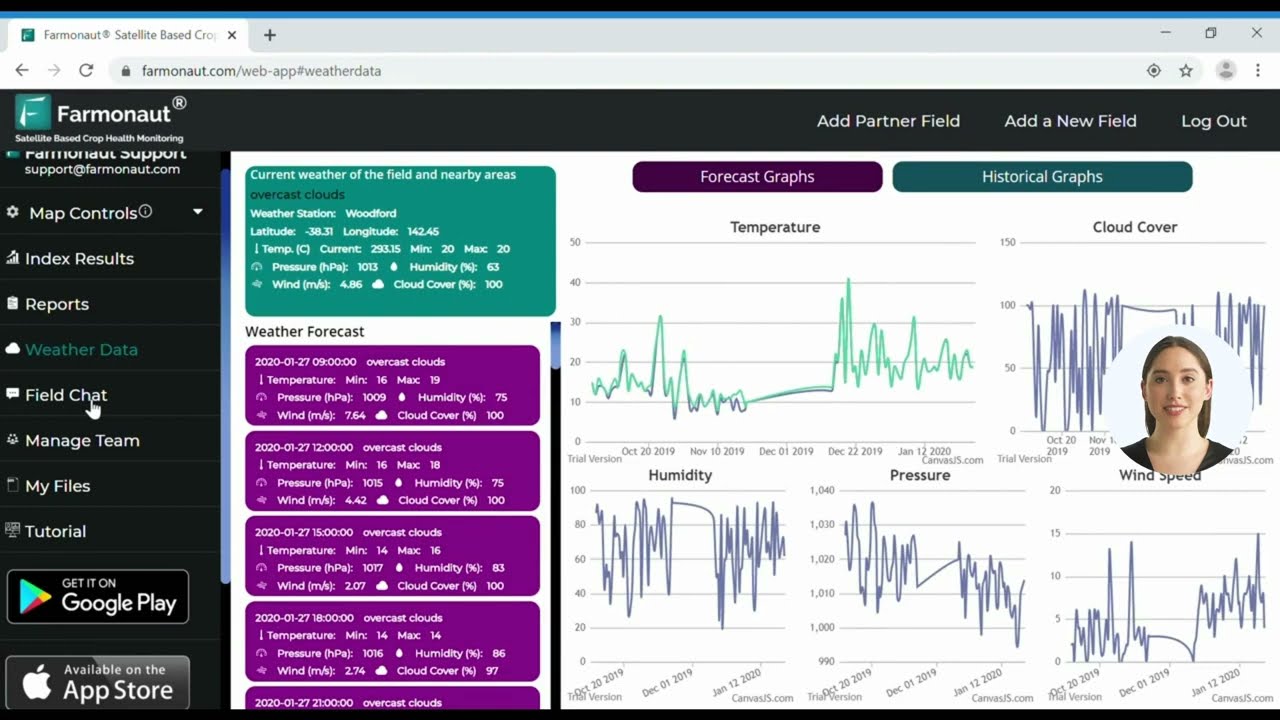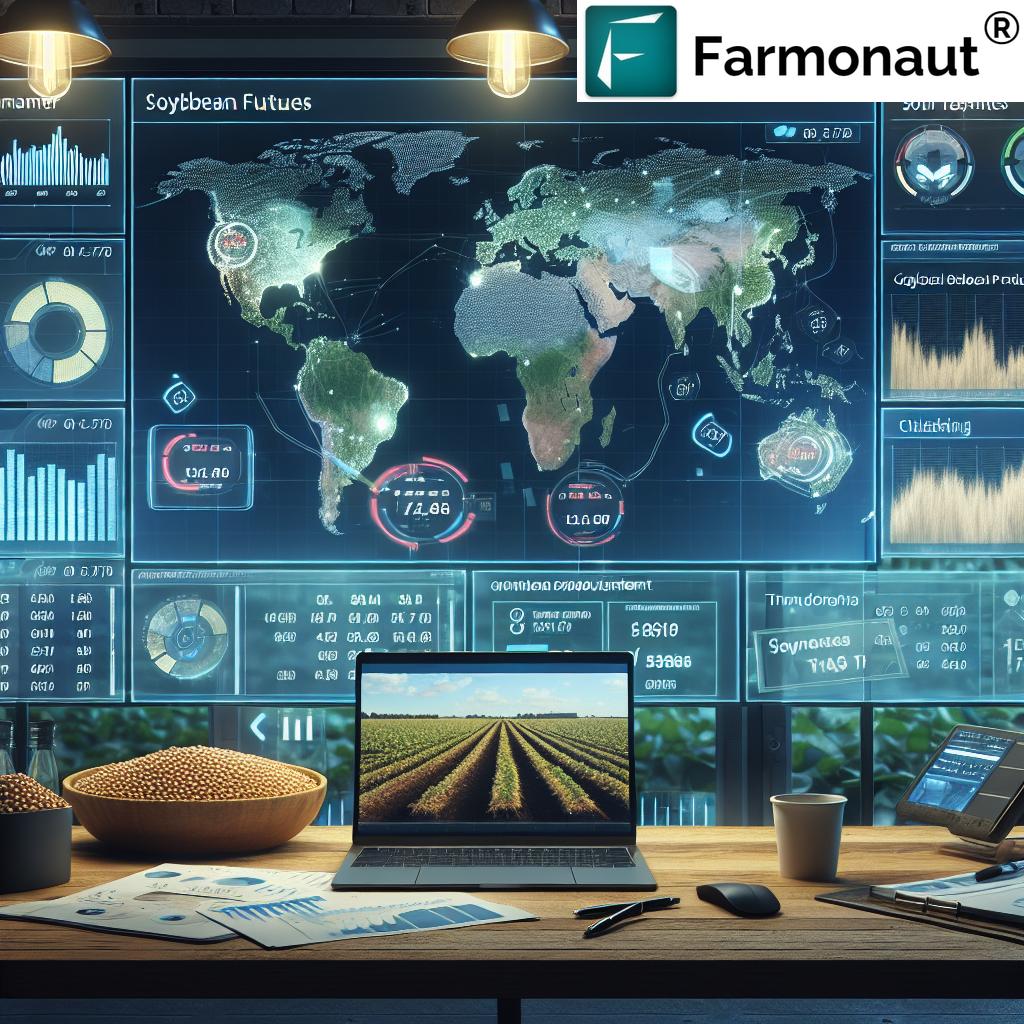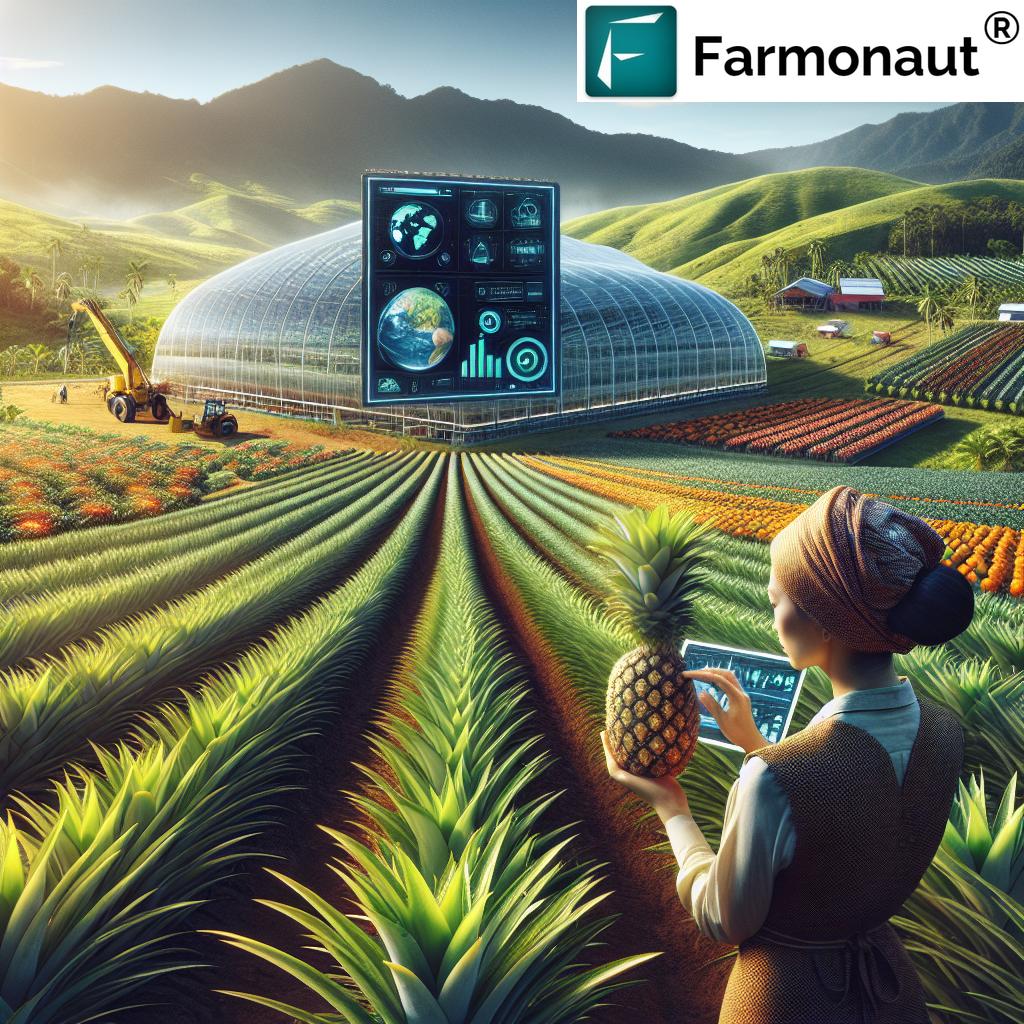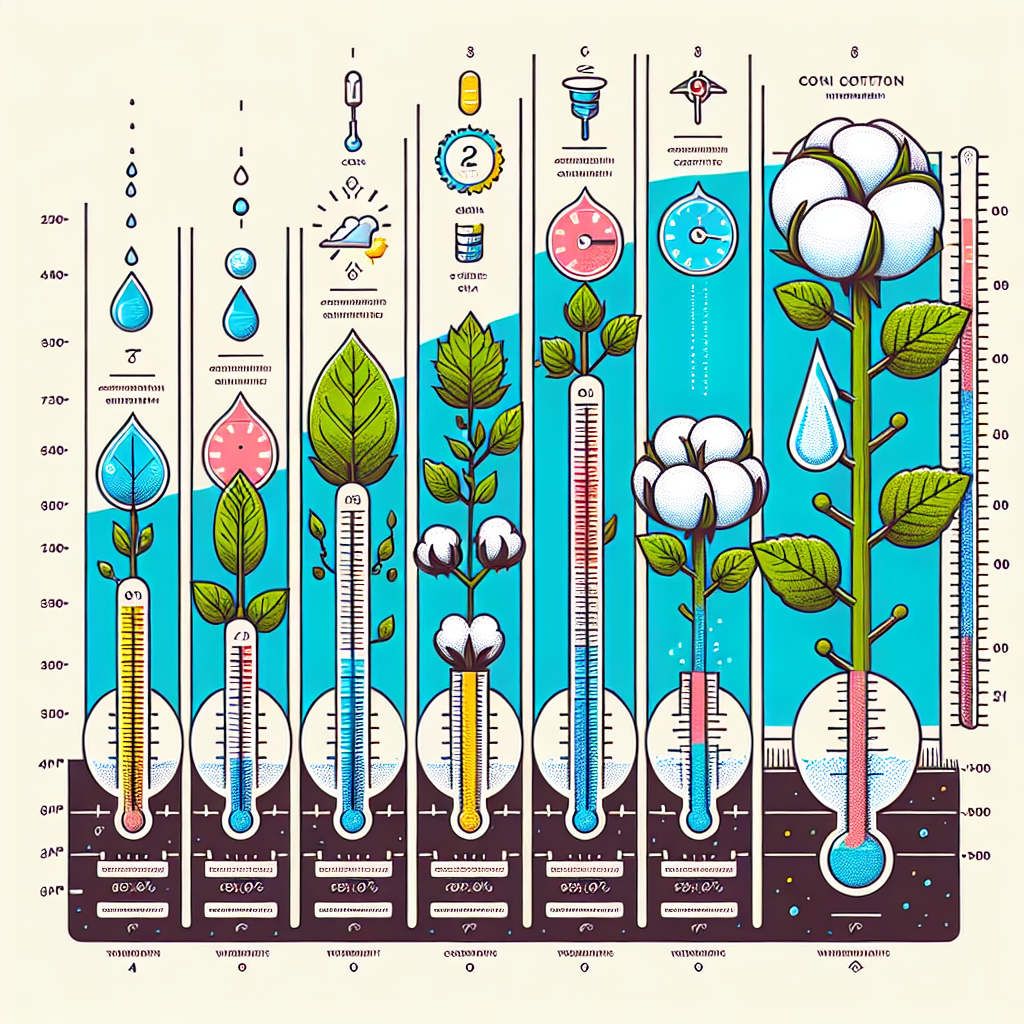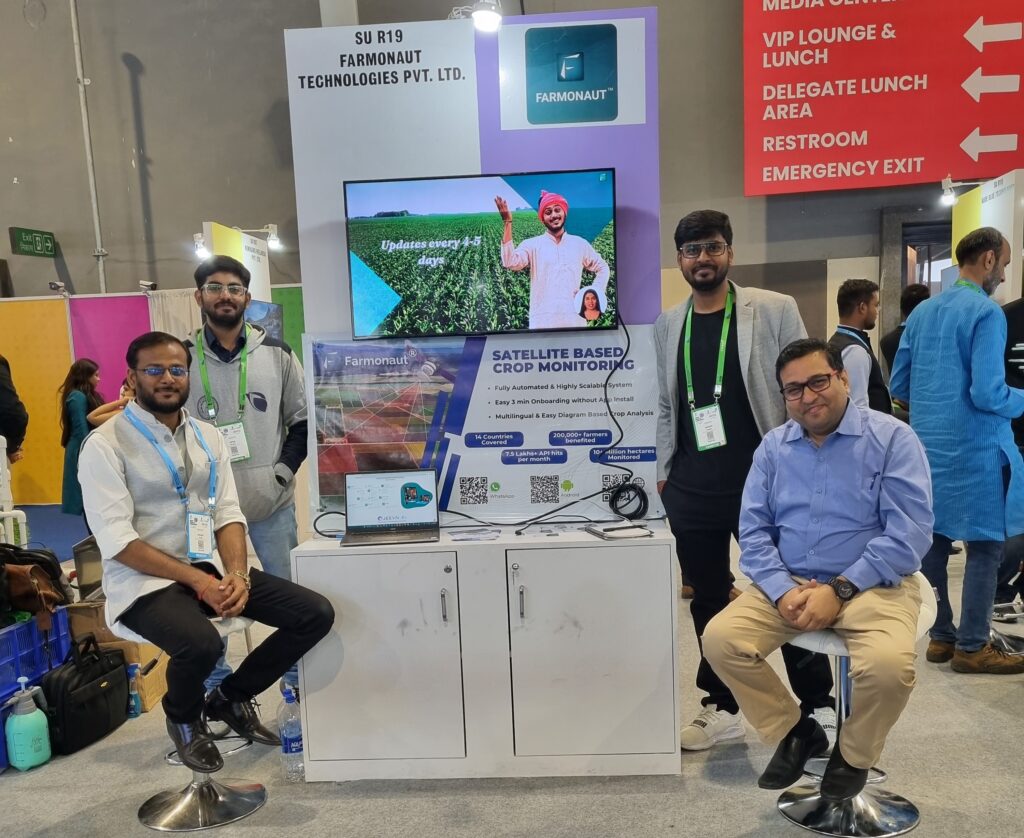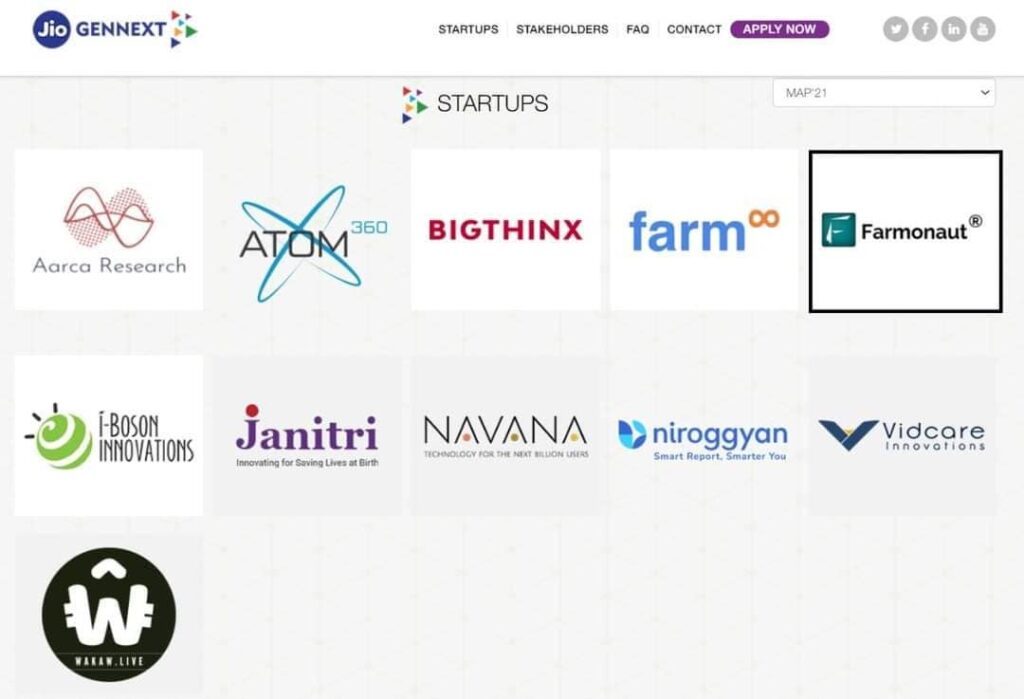Agricultural Logistics: 7 Tech Secrets Skyrocketing Profit
Table of Contents
- Introduction: The New Age of Agricultural Logistics
- Key Components of Agricultural Logistics
- Agricultural Supply Chain Challenges
- Technological Innovations Transforming Agri-Logistics
- Comparative Impact Table of Logistics Technologies
- 7 Tech Secrets Skyrocketing Profit in Agricultural Logistics
- Best Practices for Efficient Supply Chain Management in Agriculture
- How Farmonaut Fuels the Next Era in Agri-Logistics
- FAQ: Agricultural Logistics Technology and Practices
- Conclusion
“AI-driven logistics can reduce agricultural supply chain waste by up to 30%, boosting profits and sustainability.”
Introduction: The New Age of Agricultural Logistics
Agricultural logistics sit at the very heart of feeding the world. We are responsible for the planning, implementation, and control of the movement and storage of agricultural products from the point of origin to the final consumption. This process is **complex**, involving numerous stages—production, harvesting, processing, packaging, storage, transportation, and distribution. Getting it right means ensuring food security, minimizing waste, and maintaining the quality and safety of agricultural goods.
In 2024 and beyond, logistics in agriculture is undergoing a tech-fueled revolution. With solutions like IoT, AI, and blockchain, we are unlocking new levels of efficiency, profitability, and transparency. Cutting-edge platforms—including Farmonaut’s satellite-powered tools—enable efficient supply chain management in agriculture, helping us optimize decision-making every step of the way.
Join us as we unpack the essential components, key challenges, technological innovations, and seven actionable tech secrets for supercharging your agri-logistics profits.
Agricultural Logistics: Key Components and Their Roles
Understanding the core components of agricultural logistics is crucial for optimizing profits and efficient supply chain management in agriculture. Let’s break down each element:
1. Transportation and Movement of Products
Transportation forms the backbone of agri-logistics. We manage the movement of goods from farms to processing facilities, packaging units, warehouses, markets, and ultimately, to consumers’ tables. This involves:
- Selecting appropriate modes: Trucks, trains, ships, and multimodal solutions for different product types.
- Optimizing routes and delivery schedules to reduce fuel costs, time, and environmental impact.
- Implementing real-time monitoring to prevent delays and track perishable goods transportation.
2. Storage and Warehousing Facilities
Storage plays a pivotal role in food storage and distribution. Perishable products like fruits, vegetables, and dairy require proper storage—controlling humidity, temperature, and air quality to prevent spoilage and maintain shelf life. We must consider:
- Location and accessibility of warehouses to reduce transportation times.
- Automation and IoT monitoring for adjusting storage environments in real time.
- Integration with fleet and resource management tools for seamless coordination.
3. Smart Inventory Management in Agriculture
Smart inventory management ensures we maintain the right quantities at each stage. This way, we ensure availability, reduce waste, and optimize costs.
- Monitoring and controlling inventory levels using real-time data.
- Integrating AI and machine learning for better forecasting and timely restocking.
- Reducing losses due to overstocking, understocking, or spoilage.
4. Packaging for Protection and Appeal
Packaging is about more than just aesthetics. It protects agricultural products in transit and storage, reduces spoilage, and enhances marketing appeal. Good packaging:
- Utilizes sustainable materials to minimize environmental impact.
- Maintains product quality with suitable methods (vacuum sealing, modified atmospheres).
- Boosts consumer trust with clear, traceable labelling using blockchain in agricultural logistics.
5. Information & Data Management
Integrating technology for tracking, managing, and sharing information is vital. This includes:
- IoT sensors and GPS tracking for real-time visibility.
- Cloud-based inventory and logistics management.
- Blockchain systems to ensure data transparency and secure records throughout the supply chain.
Agricultural Supply Chain Challenges: Navigating the Complex Terrain
Despite all efforts, the agricultural logistics sector faces significant challenges that can impact efficiency and profitability:
1. Perishability of Products and Spoilage
Agricultural goods—especially fruits, vegetables, dairy, and other perishable items—have a limited shelf life. Rapid transportation, proper storage, and continuous temperature monitoring are required to prevent spoilage and maintain quality. Addressing perishability is crucial for minimizing food waste in logistics ((https://www.fairmontlogistics.com/articles/challenges-of-logistics-in-the-agriculture-industrynbsp?utm_source=openai)).
2. Seasonal Demand Fluctuations and Harvest Periods
Harvest seasons can overwhelm logistics networks due to surges in volume, while off-seasons lead to underutilized infrastructure and resources. Smart planning and forecasting help us manage these fluctuations ((https://navata.com/cms/challenges-in-agri-transportation/?utm_source=openai)).
3. Infrastructure Limitations in Agricultural Transportation Solutions
Many farming regions lack robust infrastructure—poor road conditions, unreliable power, insufficient warehouse capacity—making efficient supply chain management a challenge ((https://www.fairmontlogistics.com/articles/challenges-of-logistics-in-the-agriculture-industrynbsp?utm_source=openai)).
4. Regulatory Compliance & Food Safety
We must navigate a maze of government regulations around food safety, quality, labeling, and international trade. Technology solutions—like blockchain-based traceability—simplify documentation and regulatory adherence ((https://www.fairmontlogistics.com/articles/challenges-of-logistics-in-the-agriculture-industrynbsp?utm_source=openai)).
5. Supply Chain Disruptions: Adverse Weather & Unpredictability
Weather fluctuations, geopolitical issues, and market volatility can wreak havoc on logistics operations. Advanced weather forecasting and flexible logistics systems help us adapt and remain resilient ((https://navata.com/cms/challenges-in-agri-transportation/?utm_source=openai)).
“Blockchain technology can cut transaction times in agri-logistics from days to just minutes, revolutionizing traceability.”
Technological Innovations Transforming Agricultural Logistics
Solving agricultural supply chain challenges demands innovation. The integration of new technology—IoT, AI, blockchain, and automation—has redefined how we approach agricultural logistics, food storage and distribution, and perishable goods transportation.
- IoT (Internet of Things): Real-time monitoring of temperature, humidity, and transit conditions keeps perishables safe and reduces spoilage. IoT sensors also facilitate predictive maintenance, ensuring trucks and equipment operate reliably ((https://webmakers.expert/en/blog/optimization-of-logistics-in-agriculture?utm_source=openai)).
- AI and Machine Learning: These empower us with route optimization, demand forecasting, and smart inventory management in agriculture. Algorithms help cut costs, enhance delivery accuracy, and anticipate supply-demand mismatches ((https://auroraag.com/agriculture-logistics-challenges-and-how-technology-can-solve-them/?utm_source=openai)).
- Blockchain in Agricultural Logistics: Transparent, tamper-proof transaction records boost traceability, build consumer trust, and secure food safety ((https://arxiv.org/abs/1908.07391?utm_source=openai)).
- Mobile Applications: Farmer-centric apps facilitate the connection to logistics providers, instant transport requests, status updates, and streamlined market access.
- Automated Vehicles & Robotics: Self-driving delivery trucks and robotic harvesters lower manual labor costs, improve efficiency, and ensure consistent quality in product movement ((https://www.produceleaders.com/innovative-solutions-for-efficient-produce-transportation/?utm_source=openai)).
Comparative Impact Table of Technologies in Agricultural Logistics
To quantify the benefits of these innovations, we’ve assembled a table comparing their impacts across efficiency, waste, and quality assurance:
| Technology | Key Functionality | Impact on Efficiency (% Est. Improvement) | Waste Reduction (% Est. Decrease) | Quality Assurance (% Reliability Gain) | Example Applications |
|---|---|---|---|---|---|
| IoT | Sensor-based real-time monitoring (temp., humidity, location) | 20–25% | 18–22% | 30–35% | Cold-chain transport, warehouse facility tracking |
| AI | Forecasting, route optimization, predictive analytics | 25–30% | 28–30% | 25–30% | Inventory management, delivery scheduling |
| Blockchain | Data transparency, product traceability, document security | 14–19% | 10–15% | 38–42% | Supply chain certification, fraud prevention |
| Automation & Robotics | Autonomous vehicles, robotic sorting & packaging | 33–38% | 16–20% | 33–35% | Warehouse automation, self-driving trucks |
| Mobile Apps | On-demand agri-transport, real-time notifications | 14–20% | 12–17% | 15–19% | Farm-to-market logistics, dispatch scheduling |
Agricultural Logistics: 7 Tech Secrets Skyrocketing Profit
Let’s explore the most impactful technological advancements driving efficiency, cutting costs, and maximizing food quality and safety in agricultural logistics today:
- IoT-Powered Monitoring for Perishable Goods Transportation
By embedding sensors in storage, transportation trucks, and packaging, we continuously track temperature, humidity, shock, and spoilage risk. These insights allow us to:- React in real-time to prevent loss (e.g., rerouting trucks if there’s a temperature spike)
- Maintain product quality across the food storage and distribution chain
Example: Smart, sensor-based monitoring in cold chains enables faster response to environmental deviations, drastically reducing the percentage of spoiled goods.
- AI-Driven Route Optimization & Demand Forecasting
AI crunches weather data, historical movement trends, and real-time road conditions to select the fastest, most reliable routes and schedule shipments precisely to meet demand. This directly translates to:- Lower fuel and labor costs
- Timely deliveries and improved reliability
- Better management of demand and supply fluctuations
- Blockchain-Based Traceability for Food Quality Assurance
Integrating blockchain in agricultural logistics ensures each step of a product’s journey is verifiable, tamper-proof, and transparent to all stakeholders. This innovation:- Speeds up documentation and compliance
- Builds consumer trust with “farm-to-plate” transparency
- Enables swift recalls if quality issues arise
- Autonomous Vehicles & Robotics Streamlining Operations
Self-driving delivery vehicles, robotic warehouse workers, and automated sorting machines:- Reduce manual labor costs
- Improve consistency in packaging and dispatch
- Ensure faster turnaround in peak harvest periods
- App Ecosystems Connecting Farmers and Logistics Providers
Integrated mobile platforms connect farmers directly with transportation services and supply chain partners. These tools:- Streamline booking and dispatch processes
- Provide ongoing updates on product movement
- Empower small and medium scale farmers for efficient access to market
Explore the features and advantages on our Large-Scale Farm Management page—optimized tools for plantation, resource, and inventory management.
- Cloud-Based Data & Inventory Control Platforms
Cloud software makes it simple to:- Track stock in real time
- Optimize warehousing and logistics operations
- Enable seamless collaboration among all stakeholders (farmers, logistics providers, sellers, and buyers)
Boost productivity by automating key workflow using Farmonaut’s API or explore the developer documentation here.
- Sustainability & Carbon Footprint Tracking Tools
Policy and consumer demands for greener agriculture are encouraging the adoption of carbon footprint calculators for logistics:- Monitor emissions from transport, warehousing, and processing
- Guide improvements for sustainability and regulatory compliance
See how Farmonaut’s carbon footprinting solution offers actionable metrics for agri-businesses and supports sustainable growth.
Best Practices for Efficient Supply Chain Management in Agriculture
Integrating technology is only half the battle. We must also adopt best practices for effective planning, implementation, and control:
- Collaborative Planning and Forecasting: Involve all supply chain stakeholders to forecast crop volumes, harvest dates, and market demand for effective schedule and logistics alignment ((https://navata.com/cms/challenges-in-agri-transportation/?utm_source=openai)).
- Build Strong Provider Relationships: Establishing long-term partnerships with reliable logistics providers ensures priority shipments and minimizes disruptions ((https://navata.com/cms/challenges-in-agri-transportation/?utm_source=openai)).
- Utilize Real-Time Tracking: GPS and IoT allow us to monitor shipment location, inventory levels, and environmental conditions in real time ((https://webmakers.expert/en/blog/optimization-of-logistics-in-agriculture?utm_source=openai)).
- Weather-Responsive Operations: Develop contingency plans to address adverse weather and climate events, supported by seasonal forecasts and satellite monitoring.
- Advocate for Policy Support: Engage with policymakers to promote infrastructure upgrades, introduce financial incentives, and enforce food safety standards ((https://navata.com/cms/challenges-in-agri-transportation/?utm_source=openai)).
- Embrace Sustainability Practices: Reduce energy consumption, utilize renewable resources, and monitor environmental impact using dedicated sustainability tools.
How Farmonaut Fuels the Next Era in Agri-Logistics
At Farmonaut, we take pride in democratizing agricultural logistics technology—from satellite crop monitoring to blockchain traceability, AI-driven advice, and resource management. Our cloud-based approach covers every logistics challenge:
- Satellite & AI Monitoring: Precision data on crop health, soil moisture levels, and harvest readiness empower us to plan harvesting, transportation, and inventory management for maximum profit.
- Jeevn AI Advisory System: Delivers actionable, weather-aware insights to optimize resource use and productivity on every farm.
- Blockchain Traceability: Our traceability solutions let businesses and consumers verify the origin, quality, and journey of their food with ease.
- Fleet & Resource Management: On our fleet management platform, logistics providers and agri-businesses can optimize truck deployment, reduce delays, and ensure efficient operations.
- Carbon Footprinting & Sustainability: We provide integrated emissions tracking to help agri-enterprises improve their environmental impact at every logistics stage.
- Insurance and Financing Support: Farmonaut’s satellite-based verification enables accurate crop loan approvals and agricultural insurance, making risk management and financial transparency scalable.
Ready to transform your agri-logistics operations?
- Manage thousands of hectares from your phone with our web, Android, or iOS app.
- Integrate satellite and weather data seamlessly into your custom solutions via our API or dive deeper into implementation details with our comprehensive Developer Documentation.
Farmonaut Subscription Plans: Flexible for Every Farm & Business
Explore our range of subscription packages — from individual smallholders to large-scale plantation managers. Affordable, scalable, and tailored to meet your unique logistics challenges.
FAQ: Agricultural Logistics Technology and Practices
What is agricultural logistics and why is it crucial?
Agricultural logistics encompasses all planning, implementation, and control activities required to efficiently move and store agricultural products from farm to consumer. In today’s interconnected world, it is vital for ensuring food security, minimizing waste, and maintaining food quality and safety.
How does IoT help minimize food waste in logistics?
IoT technology enables real-time monitoring of storage and transportation conditions. This immediate insight allows logistics providers to act quickly and prevent spoilage or loss, thereby reducing waste and maintaining product quality in transit.
What role does AI play in agricultural logistics?
AI empowers logistics management with better demand forecasting, route optimization, and smart inventory management. It analyzes vast data—weather, crop status, market trends—to help us allocate resources efficiently and reduce delays.
Why is blockchain important for supply chain transparency?
Blockchain in agricultural logistics creates a secure, tamper-proof ledger of every movement and transaction in the supply chain. This system enables full traceability, expedites regulatory compliance, and increases consumer trust by making food origins verifiable.
How do I integrate Farmonaut’s technology into my agricultural operations?
You can get started via the Farmonaut app (web, Android, or iOS). For advanced needs, integrate satellite & weather data through our API. Our Developer Docs provide easy guides for implementation.
How can I ensure sustainability in agricultural logistics?
By leveraging advanced tracking tools such as Farmonaut’s carbon footprint calculator, we can monitor, analyze, and reduce emissions—aligning logistics operations with sustainability goals and regulatory compliance.
What are best practices for preventing food spoilage during storage and transportation?
Implement real-time, sensor-driven monitoring; use well-maintained cold chain infrastructure; plan routes with contingency options for delays or weather fluctuations; and select optimal packaging solutions compatible with perishables.
Can Farmonaut help my business with resource and fleet management?
Yes, with Fleet and Resource Management, you gain the ability to track, schedule, and optimize logistics assets (trucks, warehouses, harvesting equipment) for efficient operations at any scale.
Conclusion
In the evolving world of agricultural logistics, embracing technology is no longer optional—it’s essential. From satellite data to AI-powered insights, IoT monitoring, and blockchain-based traceability, these innovations are transforming every link in the agricultural supply chain. As logistics professionals, farmers, and agri-business leaders, our role is to champion these changes.
By overcoming challenges such as perishability, fluctuating demand, and infrastructure limitations with advanced agricultural logistics technology, we can build an efficient, resilient, and profitable future—delivering safe, high-quality food to consumers around the globe.
Ready to take control of your logistics and storage strategies? Start your digital transformation with Farmonaut today—because food security, quality, and profit all depend on getting the supply chain right.








